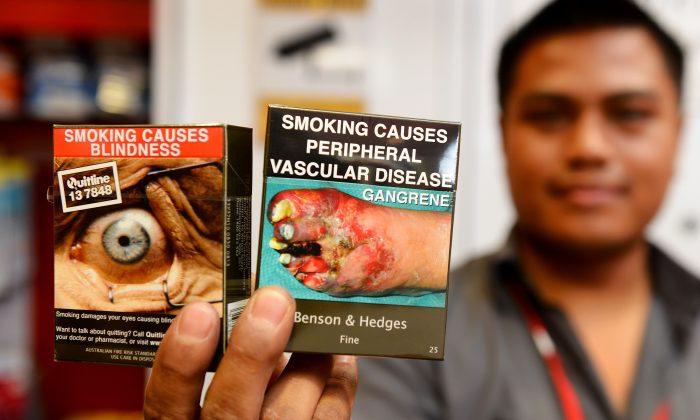Australia stuck grotesque images of what can happen when people smoke for a long time--including a bottom lip infected with mouth cancer--on packs of cigarettes starting late last year, and according to new research the message is working. People are thinking about quitting more when smoking cigarettes from the packs with this aggressive labeling on them.
The Cancer Council Victoria did the study while there were still packs with brand labeling around, during the time the new packs were being introduced. Out of 536 smokers surveyed, almost 70 percent were seriously considering quitting in the next six months.
‘‘The results are really encouraging. They are consistent with the objectives of the plain packaging act,’' Kylie Lindorff, acting executive director of Quit Victoria, told the Sydney Morning Herald. ‘‘That smokers are more likely to think about quitting is really important because other research tells us that the more frequent thoughts you have about quitting, the more likely you are to make a quit attempt.’’
Smokers surveyed by the council were also more likely to think that the cigarettes they smoked were of lower quality than a year prior, compared with those using the branded packs (30 percent versus 18 percent).
A law introduced in December banned branding and required graphic health warnings to cover three-quarters of each cigarette package.
Tanya Plibersek, federal health minister, said that the research affirms that Australia made the right choice.
“It backs up the anecdotal evidence that we had,” she told the Australian Broadcasting Corporation. “I had a lot of cross smokers ring my office asking what I'd done to the taste of cigarettes. Of course, we hadn’t done anything to the taste of cigarettes, but the plain packaging was making them less appealing.”
Meanwhile, Scott McIntyre, spoksman for the British American Tobacco, said that the research was too preliminary to draw from, since branded packs were still on the marketplace during the study.
“It’s still very early on, remembering we’re the first country to go through it. To look at the situation properly you would wait longer to see if any trends started to take place, say 12 to 18 months,” he said.
“Australia is a mature market with heavy legislation and high levels of smoker education on the risks with tobacco and as such we’ve had a steady decline in smokers over the last 10 years. There has been no deviation to that trend since plain packs were introduced.”
The United Kingdom and New Zealand are currently considering similar legislation. Thailand has had similar legislation since 2005, but requires less space for the health warnings--50 percent of each package. The country also prohibits putting the words “light” and “mild” on the packages.






Friends Read Free